The Transitions
by Temple Blackwood
Castine, ME
Note: Click on any picture to see a larger version.
Transitions
seem to be one of the frequently under-recognized aspects of design, which should actually be viewed as the most critical component of design, which challenges execution. These are the make 'n break parts of how one design element connects to another to create a pleasing (or not) whole object image. Turning some of those transition elements, like paying conscious attention to the "order of cuts"
(September 2014 HWT article), can be a daunting prospect worthy of careful planning and practice.
In simple terms, think of how the thin stem of a goblet connects to its base and the relationship that has with how the same thin stem connects to the goblet bowl.
Similarly, the larger chalice (seen below), a copy of a historic pewter communion chalice, reflects the delicate balance between the diameters, height, and connecting transitions. The base must be of the "right" diameter to support the stem. The stem diameter, length, and taper must lead the eye to appear to properly support the bowl.
It may even seem that there is no transition, as seen with this walnut Champaign flute, but those connecting points are in fact a transition that blends the design lines seamlessly.
From a larger perspective examine how a porch post develops a critical relationship between the floor beneath it with the column base and the ceiling above with its often equally decorative capital.
Although these transition elements are key elements to making a pleasing design, or interrupting a disquieting design, often the people viewing them filter them out in the same way we usually do not "see" the telephone poles we pass along the road, although clearly we are aware of them.
Often in woodturning and architectural design the transition highlights and connects elements moving from the vertical (a porch column or goblet stem) to the horizontal (the floor, ceiling, tabletop and goblet bowl). Often with architectural elements and treen, the elements will be viewed in relationship to other similar ones (see photo below).
In the real world of utilitarian turnings, such as tools and furniture, there are other transitions that are equally important and need some consideration. One such unseen transition element is the connection between a mallet or gavel handle and the striking head.
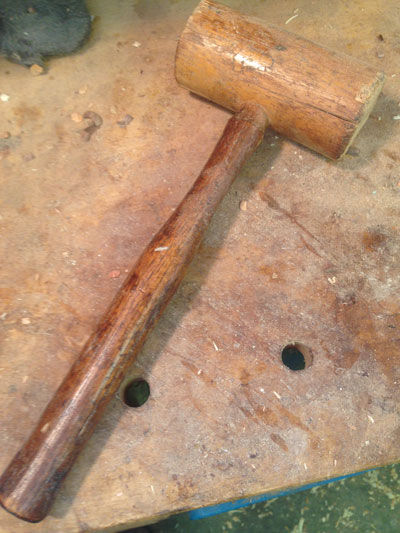
|
The store-bought mallet offers minimal
transition decoration
|
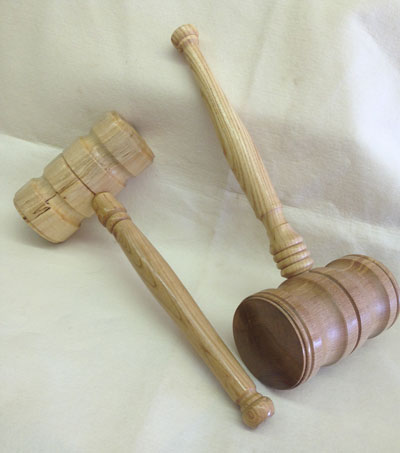
|
The more carefully made woodturner's
shop mallets add a useful as well as
pleasing flair of detail.
|
The different elements become well-known hand positions for the craftsman/artist.
Another important transition, actually the source inspiration for this article, is the transition of a table or stretcher leg from round to square pommel, as might be seen in a gate-legged table or a country kitchen table.
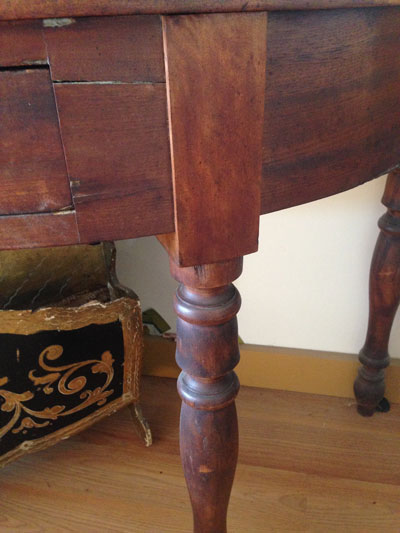
|
|
Gate Leg Table
|
Similar to a basic porch post where the base and top of the post are square with square-to-round and round-to-square transitions in the middle (typically such posts do not have fancy bases to the floor or a capital to the ceiling), these transitions become important elements blending the different elements of a turning, one into the next, to create a pleasing whole fixture that nearly always makes an important functional item more decorative and pleasing.
Barley twist posts and/or corner store
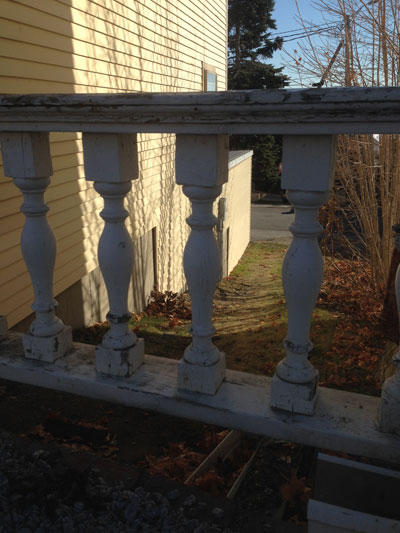
|
|
Did someone install these upside down?
|
One of my students is working on designing and building the legs and framework for coffee tables that will support a painted ceramic tile top.
His question was about how to work a fairly simple turned leg into a square pommel that would accept his planned mortise and tenon skirt. We talked about the several different styles of transition and how he might make each one.
The first transition style possibility for this project is a simple square shoulder connection. While this might be made imperfectly with a
Fluted Parting Tool, the best go-to tool in my box is the
Skew Chisel, (the classical rectangular skew works best for this job), which when used with the toe point down can be levered into the work to
crisply cut the 90 degree joint
from square blank to the rounded leg. The prudent turner might wrap and mark the proposed joint position with masking or packaging tape to preserve the sharp pommel edge, especially when turning cedar, fir, or pine.
Square to Round
While it is possible to make a
slight cove-cut with a roughing gouge
to make the transition from square-to-round, this will work best if the turner again starts by marking the crisp edge of the square blank with the skew and then applies the gouge.
Again using the skew, make the
straight angle cut
with the skew positioned away.
Round with either the toe or the heel to make the
slight half-bead rounded
transition cut.
Finally, after cutting in the rough joint using either the skew or the fluted parting tool, cut a
lamb's tongue
transition, medium-to-large size gouge.
The end goal is to create a pleasing transition between the round and square elements such as this variation of the prepared leg of a
child's bench.
The most important rule of thumb is to practice, practice, and practice some more. Along the way take pleasure in the magnificent way a sharpened edge cuts the wood cleanly as if the two complement each other.
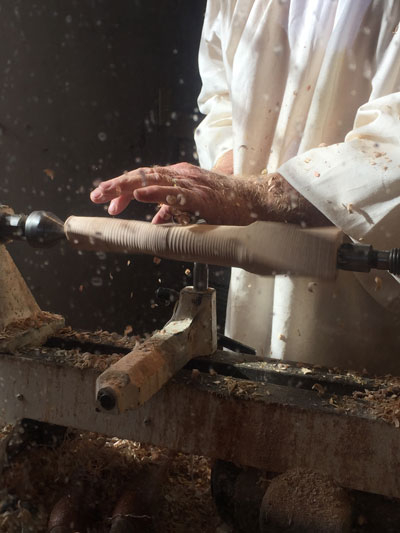
|
|
Photo by Deborah Kulisch
|
Located in Castine, Highlands Woodturning gallery and shop offers woodturning classes and shop time,
a gallery of woodturned art, custom woodturning for repairs, renovations, and architectural installations.
You can email Temple at
temple@highlandswoodturning.com
Take a look at Temple's Website at
http://www.highlandswoodturning.com/.
